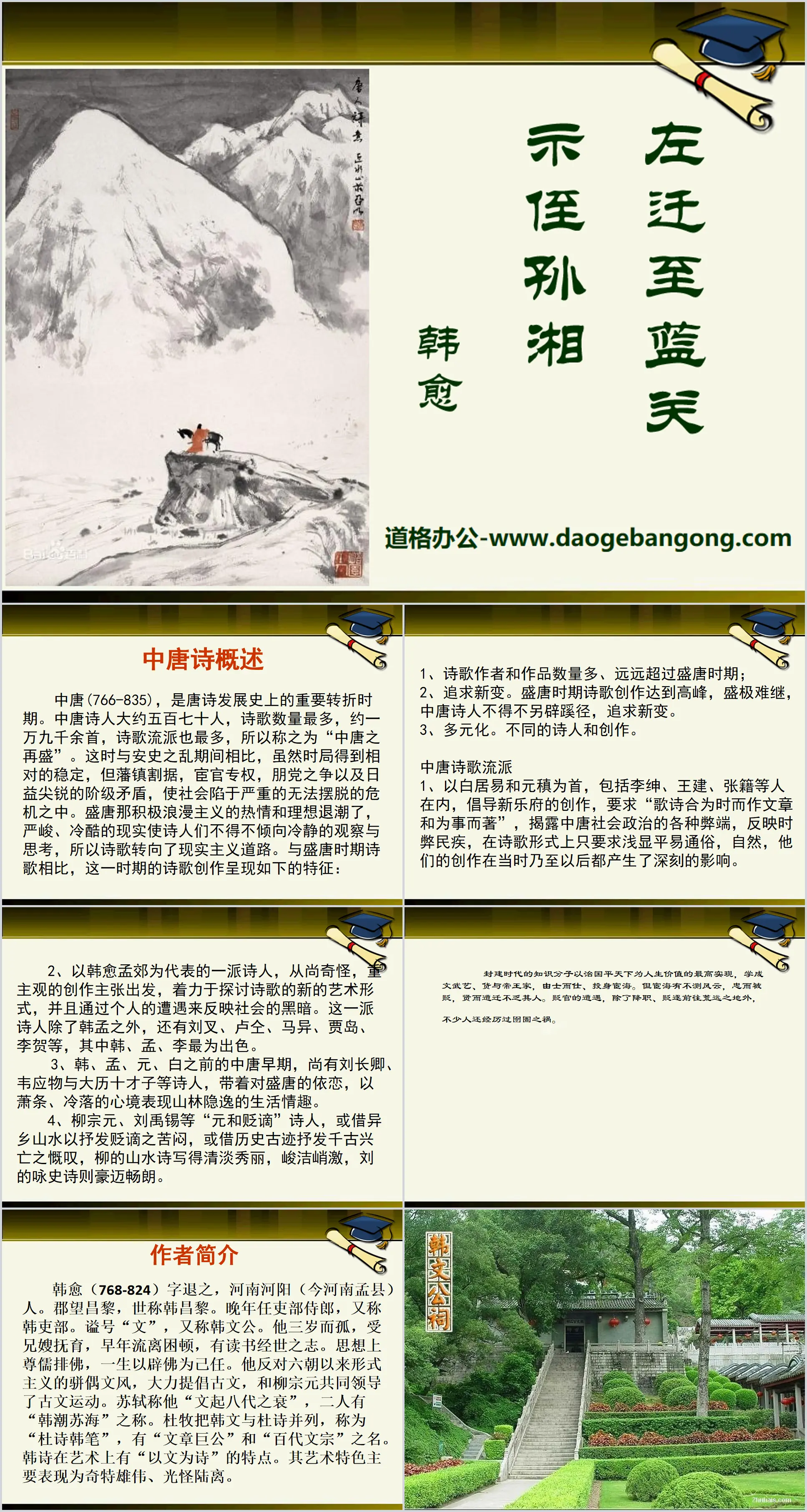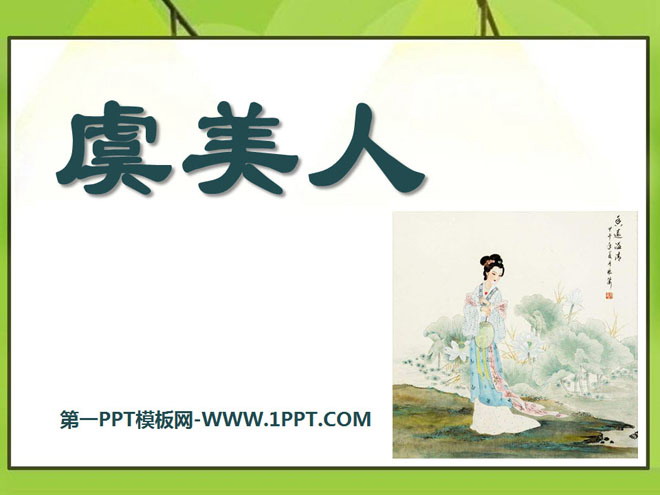"Moving to Languan to Show Nephew Xiang" PPT Courseware 2 Simple campus recruitment activity planning plan summary enterprise and institution recruitment publicity lecture PPT template is a general PPT template for business post competition provided by the manuscript PPT, simple campus recruitment activity planning plan summary enterprise and institution recruitment promotion Lecture PPT template, you can edit and modify the text and pictures in the source file by downloading the source file. If you want more exquisite business PPT templates, you can come to grid resource. Doug resource PPT, massive PPT template slide material download, we only make high-quality PPT templates!
| 文件名 如何下载使用 | 下载次数 | Download Points | 下载地址 |
|---|---|---|---|
| "Moving to Languan to Sh... | 17950次 | 0.00 | Free Download |
Tips: If you open the template and feel that it is not suitable for all your needs, you can search for related content "Moving to Languan to Show Nephew Xiang" PPT Courseware 2 is enough.
How to use the Windows system template
Directly decompress the file and use it with office or wps
How to use the Mac system template
Directly decompress the file and use it Office or wps can be used
Related reading
For more detailed PPT-related tutorials and font tutorials, you can view: Click to see
How to create a high-quality technological sense PPT? 4 ways to share the bottom of the box
Notice
Do not download in WeChat, Zhihu, QQ, built-in browsers, please use mobile browsers to download! If you are a mobile phone user, please download it on your computer!
1. The manuscript PPT is only for study and reference, please delete it 24 hours after downloading.
2. If the resource involves your legitimate rights and interests, delete it immediately.
3. Contact information: service@daogebangong.com
"Moving to Languan to Show Nephew Xiang" PPT Courseware 2, due to usage restrictions, it is only for personal study and reference use. For commercial use, please go to the relevant official website for authorization.
(Personal non-commercial use refers to the use of this font to complete the display of personal works, including but not limited to the design of personal papers, resumes, etc.)

Related reading
For more detailed PPT-related tutorials and font tutorials, you can view:Please click to see










Authoritative PPT Summary
"Moving to Languan to Show Nephew Xiang" PPT Courseware 2
An overview of poetry in the mid-Tang Dynasty
The Mid-Tang Dynasty (766-835) was an important turning period in the development history of Tang poetry. There were about 570 poets in the Mid-Tang Dynasty, with the largest number of poems, about 19,000, and the largest number of poetry genres, so it is called the "Resurgence of the Mid-Tang Dynasty". At this time, compared with the Anshi Rebellion, although the current situation was relatively stable, the separatist rule of vassal towns, the exclusive power of eunuchs, crony disputes, and increasingly acute class contradictions plunged society into a serious crisis that could not be escaped. The enthusiasm and ideals of positive romanticism in the prosperous Tang Dynasty receded. The severe and cold reality forced poets to lean towards calm observation and thinking, so poetry turned to the path of realism. Compared with the poetry of the heyday of the Tang Dynasty, the poetry creation of this period showed the following characteristics:
1. The number of poetry authors and works is large, far exceeding that of the Tang Dynasty;
2. Pursue new changes. During the prosperous Tang Dynasty, poetry creation reached its peak, and its prosperity could not be sustained. The poets of the Mid-Tang Dynasty had to find new ways and pursue new changes.
3. Diversification. Different poets and creations.
Schools of Poetry in the Mid-Tang Dynasty
1. Led by Bai Juyi and Yuan Zhen, including Li Shen, Wang Jian, Zhang Ji and others, they advocated the creation of New Yuefu, requiring that "songs and poems should be combined to compose articles from time to time and write for events", exposing the social and political changes of the mid-Tang Dynasty. Various shortcomings reflected the ills of the times and the ills of the people, and the form of poetry only required simplicity and popularity. Naturally, their creations had a profound impact at that time and even later.
2. A group of poets represented by Han Yu and Meng Jiao started from creative ideas that were still strange and focused on subjectivity, focused on exploring new art forms of poetry, and reflected the darkness of society through personal encounters. In addition to Han Meng, this school of poets also includes Liu Cha, Lu Tong, Ma Yi, Jia Dao, Li He, etc. Among them, Han, Meng and Li are the most outstanding.
3. In the early Middle Tang Dynasty before Han, Meng, Yuan and Bai Dynasties, there were still poets such as Liu Changqing, Wei Yingwu and the Ten Talents of Dali. With their attachment to the prosperous Tang Dynasty, they expressed the taste of life in seclusion in the mountains and forests with a depressed and indifferent mood.
4. Liu Zongyuan, Liu Yuxi and other poets who were "relegated in the Yuan Dynasty" either used the landscapes of foreign lands to express the anguish of being relegated, or used historical monuments to express their emotions about the rise and fall of the ages. Liu's landscape poems are light, beautiful, majestic and sharp, and Liu's chants The epic poem is bold and clear.
About the Author
Han Yu (768-824), whose courtesy name was Tuizhi, was born in Heyang, Henan (now Meng County, Henan). The county looks to Changli, which is known as Han Changli in the world. In his later years, he served as the Minister of the Ministry of Personnel, also known as the Ministry of Official Affairs of Han. His posthumous title is "Wen", also known as Han Wen Gong. He was orphaned at the age of three and was raised by his brother and sister-in-law. He was homeless in his early years and had the ambition to study and manage the world. Ideologically, he respects Confucianism and excludes Buddhism, and takes it as his own duty to defeat Buddhism throughout his life. He opposed the formalistic parallel-puppet writing style since the Six Dynasties, vigorously advocated ancient prose, and co-led the ancient prose movement with Liu Zongyuan. Su Shi called him "the rise of literature and the decline of eight generations", and the two of them were known as the "Han Chao Su Hai". Du Mu juxtaposes Korean writing with Du poetry, calling it "Hanbi of Du poetry", and is known as "The Great Master of Articles" and "The Wen Zong of a Hundred Generations". Korean poetry has the characteristic of "using text as poetry" in art. Its artistic features are mainly strange, majestic and grotesque.
In this situation, what does the poet want to tell us?
Where is home? There are many obstacles between my hometown and the king. Looking back: the road back is elusive.
The horse is not moving forward, the people are not moving forward - too many worries - the future is difficult and uncertain. Looking forward: the road ahead is uncertain.
writing background
Emperor Xianzong of the Tang Dynasty was very superstitious about Buddhism. In the 14th year of Yuanhe, he sent a group of eunuchs and monks to bring a phalanx of Sakyamuni from Famen Temple to the Chang'an Palace for worship. After worshiping for three days, he took the phalanx again. They were sent to major temples in Chang'an for worship. For a time, the princes and ministers inside and outside the capital launched a frenzy of extravagance and extravagance, and the people in the streets talked a lot. Han Yu, who was the Minister of Justice at the time, felt that the emperor's advocating superstitious activities had no benefit to the national economy and people's livelihood, and since the Eastern Han Dynasty, emperors who believed in Buddhism had been short-lived. He wrote a memorial (i.e., "On the Bone Table of Buddha") to advise.
Tang Xianzong Long Yan was furious and Han Yu was almost sentenced to death. Fortunately, Pei Du and other upright ministers tried their best to rescue him, so Tang Xianzong had to change his mind and demoted Han Yu to the post of Chaozhou Governor, demanding that he be promoted to the throne immediately. Han Yu spent most of his life in officialdom. He was promoted to Minister of Justice at the age of fifty because of his involvement in the Pinghuai River. Two years later, I suffered this disaster again. I was in a very low mood, full of grievances, anger, and sadness. Chaozhou is located in eastern Guangdong, eight thousand miles away from Chang'an, the then capital. Han Yu was alone and hurriedly set out on the road. When he reached Lantian Pass, his wife and children had not followed him, and only his grandnephew Han Xiang came over. Han Yu then wrote this poem, a sad song for crying, and gave it to his grandnephew Han Xiang.
Summarize the whole poem
"Moving to the Left to Languan to Present to My Nephew Xiang" is a relatively profound political lyric poem. The poet combined the corruption of the imperial court with his own misfortunes and expressed his loyalty and courage to eradicate the corrupt policies of the imperial court.
The first four lines of the poem: Be loyal and be demoted. The narrative discussion is concise, lively and impassioned.
The last four sentences: Lan Guan shows Xiang. With a sudden stroke, he expresses his own intention by describing the scene and narrating the scene. It is sad and desolate, and the emotional tone changes. The whole poem opens and closes, with depression and frustration.
Explore: What kind of emotions do poets generally express in derogatory poems?
1. The tragedy of a hero’s end
2. The anger of being demoted despite being loyal
3. The frustration of unrealized ambitions
4. The sigh of being born at the wrong time
5. The pain of traveling in prison
6. Nostalgia for the country
Keywords: Zuoqian moved to Languan to show his nephew Sunxiang teaching courseware, Chinese version ninth grade Chinese courseware for the second volume, ninth grade Chinese slide courseware download, Zuoqian moved to Languan to show his nephew Sunxiang PPT courseware download, .ppt format
For more information about the PPT courseware "Moving to the Left to Lan Guan to Show My Nephew Xiang", please click on the "Moving to the Left to Lan Guan to Show My Nephew Xiang" ppt tag.
"Moving to the Left to Languan to Show His Nephew Xiang" PPT Courseware 3:
"Moving to the Left to Languan to Show Nephew Xiang" PPT Courseware 3 About the Author Han Yu (768824) was a thinker and writer in the Tang Dynasty, ranking first among the eight great writers of the Tang and Song Dynasties. The courtesy name is Tuizhi, a native of Nanyang (now Meng County, Henan Province). Zhenyuan Jinshi. During the reign of Emperor Xianzong of the Tang Dynasty, he accompanied Pei Du to pacify the Huaixi feudal town.
PPT courseware of "Moving to Languan to Show Nephew Xiang":
"Zuo Qian moved to Languan to show his nephew Xiang" PPT courseware Han Yu (768824), also known as Tuizhi, was a native of Heyang, Henan (now Meng County, Henan) in the Tang Dynasty. Famous litterateur and philosopher. Advocate of the classical prose movement. People in the Ming Dynasty ranked him as the first of the eight great masters of the Tang and Song Dynasties. Because Changli (now Changli, Hebei Province)...